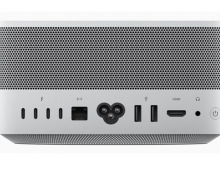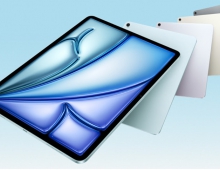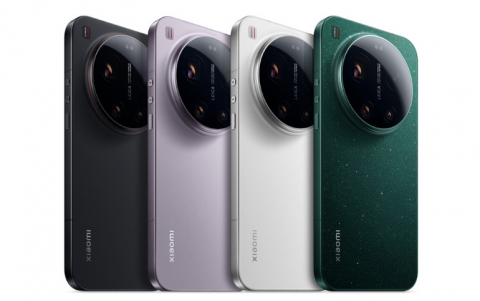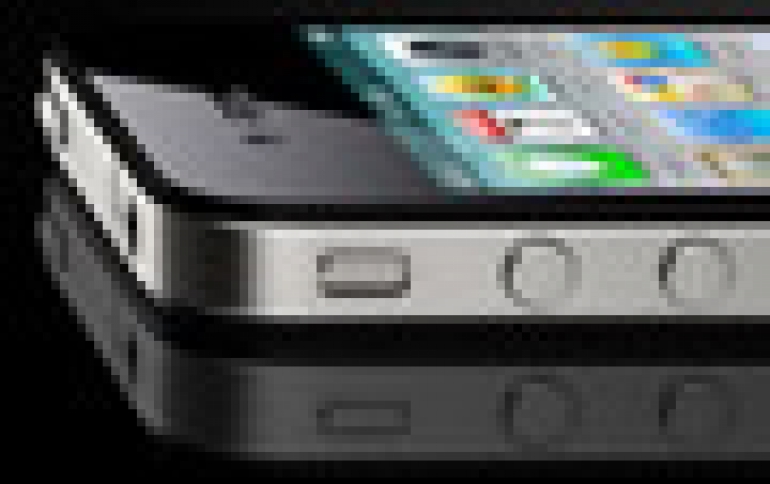
Apple And Google Battle Moves to the Display Front
The technology battle between Apple and Google has expanded to the cell phone display market, with the iPhone 4's new retina display taking on the Active-Matrix Organic Light Emitting Diode (AMOLED) screen used in the Google Nexus One, according to iSuppli Corp.
LCD technology currently dominates the market for displays used in mobile handsets, with worldwide shipments amounting to 1.6 billion units in 2009, according to iSupply data. In comparison, shipments of mobile handset AM-OLEDs are tiny in comparison, at 20.5 million units in 2009. However with the adoption of AM-OLED technology in new smart phone models, the technology is set to undergo industry-leading growth, with shipments rising by a factor of nine from 2009 to 2014, compared to just a 26.6 percent increase for LCDs.
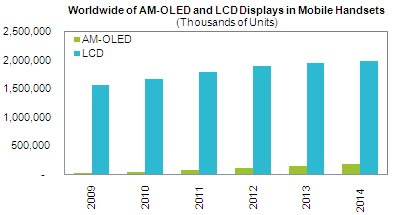
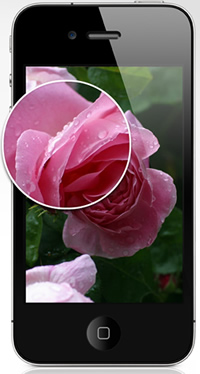 The previous iPhones used both a-Si and LTPS TFT LCD technologies. Any iPhone users could end up with either a-Si or LTPS in their iPhone. The LTPS versions might have slightly better battery life or higher brightness, but most users could not tell the difference. The iPhone 4 uses LTPS TFT only. A-Si can?t obtain a high enough resolution yet, mainly because of its lower electron mobility and larger TFT size.
The previous iPhones used both a-Si and LTPS TFT LCD technologies. Any iPhone users could end up with either a-Si or LTPS in their iPhone. The LTPS versions might have slightly better battery life or higher brightness, but most users could not tell the difference. The iPhone 4 uses LTPS TFT only. A-Si can?t obtain a high enough resolution yet, mainly because of its lower electron mobility and larger TFT size.
The first generation iPhone, released in 2007, had a 3.5" HVGA (480 x 320 pixel) display, which was pretty advanced at the time. However, the successive iPhone 3G and 3GS models used the same display. Meanwhile, other smart phone displays surpassed the iPhone with 3.5" or 3.7" WVGA (800 x 480 pixel) formats. Smart phones such as in the Samsung Omnia II and Google's Nexus One more than doubled this resolution, and also utilized the new AMOLED technology. There have been side-by-side comparisons of the iPhone 3GS with Google?s Nexus One, which put pressure on the display engineers at Apple. Well, they have responded definitively with the new iPhone 4 display, leapfrogging the competition with nearly twice the resolution of WVGA.
"Apple is really setting itself apart from the Google Android phones with the use of the 3.5-inch retina display in the iPhone 4," said Vinita Jakhanwal, principal analyst, small and medium displays, for iSuppli. "The Nexus One smart phone, introduced in January, upped the ante in handset displays with its 3.7-inch AM-OLED to deliver stunning images. However, Apple raised the bar even further by offering an LCD display with advanced In-Plane Switch (IPS) technology."
IPS supports a wider viewing angle and better picture quality in terms of presentation of color than a conventional LCD. In the case of Apple?s retina display, the resolution of the image is enhanced by the use of smaller-than-normal pixels. This increases the number of pixels on the screen to 326 Pixels Per Inch (PPI), compared to 160 PPI for the 3.5 half VGA resolution display in the iPhone 3G S. Because of this, the pixels on the retina display are so small that the human eye cannot distinguish between them.
Small pixels enable crisper and finer edges on the displayed content, especially text. Higher resolutions enabled by smaller pixels also help allow the display of a lot more content in the same size display.
Apple made its first use of IPS technology for the LCD display on the iPad.
In contrast, the high resolution on AM-OLEDs is currently achieved using sub-pixel rendering, which accentuates the edges on text at high resolutions. OLEDs hold several advantages over LCDs, including a larger color gamut, faster response time, a thinner form factor and no requirement for backlighting, which reduces power consumption and extends battery life. On the other hand, the iPhone?s retina display must make use of LED backlights to illuminate the display.
iSuppli believes the Nexus One serves as a technology showcase, blazing a trail for other smart phones using the Android operating system. Because of this, iSuppli expects to see the adoption of AM-OLED displays in Android smart phones by a number of brands in the future.
At the introduction of the iPhone 4 last Monday, Apple CEO Steve Jobs said that retina display would set the standard for displays in the next several years.
Recent demonstrations of small displays have delivered PPI of only 310, putting Apple in the lead - at least for now.

 The previous iPhones used both a-Si and LTPS TFT LCD technologies. Any iPhone users could end up with either a-Si or LTPS in their iPhone. The LTPS versions might have slightly better battery life or higher brightness, but most users could not tell the difference. The iPhone 4 uses LTPS TFT only. A-Si can?t obtain a high enough resolution yet, mainly because of its lower electron mobility and larger TFT size.
The previous iPhones used both a-Si and LTPS TFT LCD technologies. Any iPhone users could end up with either a-Si or LTPS in their iPhone. The LTPS versions might have slightly better battery life or higher brightness, but most users could not tell the difference. The iPhone 4 uses LTPS TFT only. A-Si can?t obtain a high enough resolution yet, mainly because of its lower electron mobility and larger TFT size.
The first generation iPhone, released in 2007, had a 3.5" HVGA (480 x 320 pixel) display, which was pretty advanced at the time. However, the successive iPhone 3G and 3GS models used the same display. Meanwhile, other smart phone displays surpassed the iPhone with 3.5" or 3.7" WVGA (800 x 480 pixel) formats. Smart phones such as in the Samsung Omnia II and Google's Nexus One more than doubled this resolution, and also utilized the new AMOLED technology. There have been side-by-side comparisons of the iPhone 3GS with Google?s Nexus One, which put pressure on the display engineers at Apple. Well, they have responded definitively with the new iPhone 4 display, leapfrogging the competition with nearly twice the resolution of WVGA.
"Apple is really setting itself apart from the Google Android phones with the use of the 3.5-inch retina display in the iPhone 4," said Vinita Jakhanwal, principal analyst, small and medium displays, for iSuppli. "The Nexus One smart phone, introduced in January, upped the ante in handset displays with its 3.7-inch AM-OLED to deliver stunning images. However, Apple raised the bar even further by offering an LCD display with advanced In-Plane Switch (IPS) technology."
IPS supports a wider viewing angle and better picture quality in terms of presentation of color than a conventional LCD. In the case of Apple?s retina display, the resolution of the image is enhanced by the use of smaller-than-normal pixels. This increases the number of pixels on the screen to 326 Pixels Per Inch (PPI), compared to 160 PPI for the 3.5 half VGA resolution display in the iPhone 3G S. Because of this, the pixels on the retina display are so small that the human eye cannot distinguish between them.
Small pixels enable crisper and finer edges on the displayed content, especially text. Higher resolutions enabled by smaller pixels also help allow the display of a lot more content in the same size display.
Apple made its first use of IPS technology for the LCD display on the iPad.
In contrast, the high resolution on AM-OLEDs is currently achieved using sub-pixel rendering, which accentuates the edges on text at high resolutions. OLEDs hold several advantages over LCDs, including a larger color gamut, faster response time, a thinner form factor and no requirement for backlighting, which reduces power consumption and extends battery life. On the other hand, the iPhone?s retina display must make use of LED backlights to illuminate the display.
iSuppli believes the Nexus One serves as a technology showcase, blazing a trail for other smart phones using the Android operating system. Because of this, iSuppli expects to see the adoption of AM-OLED displays in Android smart phones by a number of brands in the future.
At the introduction of the iPhone 4 last Monday, Apple CEO Steve Jobs said that retina display would set the standard for displays in the next several years.
Recent demonstrations of small displays have delivered PPI of only 310, putting Apple in the lead - at least for now.





